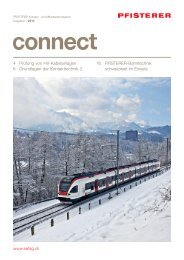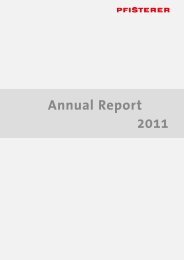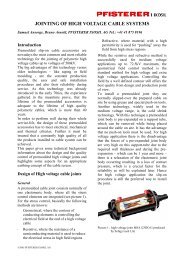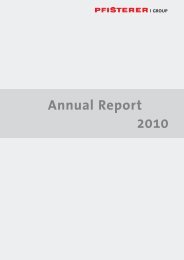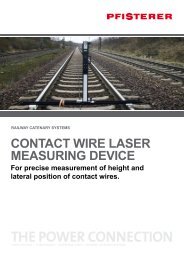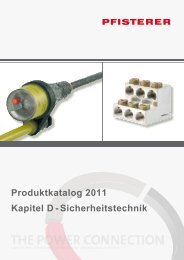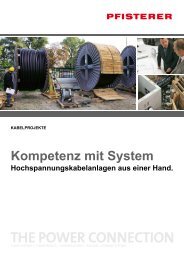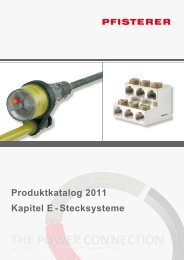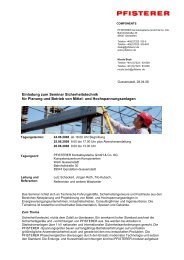Bending of helically twisted cables under variable ... - Pfisterer
Bending of helically twisted cables under variable ... - Pfisterer
Bending of helically twisted cables under variable ... - Pfisterer
You also want an ePaper? Increase the reach of your titles
YUMPU automatically turns print PDFs into web optimized ePapers that Google loves.
5<br />
For all these reasons, the first and most important step towards the solution <strong>of</strong> the described problems<br />
should be the study <strong>of</strong> conductor bending, including the effect <strong>of</strong> <strong>variable</strong> bending stiffness caused by<br />
the construction <strong>of</strong> the conductor and concomitant internal friction. This also defines the problem to be<br />
solved with this project.<br />
1.2. Developments to date<br />
Virtually since the day <strong>cables</strong> were introduced as construction elements, engineers were preoccupied<br />
with their bending behaviour, since they soon recognised that this stress mode is <strong>of</strong> particular<br />
importance to the reliability in service <strong>of</strong> the <strong>cables</strong>. For this reason, many papers have been written on<br />
this topic, contributing to better comprehension <strong>of</strong> this problem. A full overview <strong>of</strong> all such work would<br />
exceed the scope <strong>of</strong> this project. Instead, only those projects are briefly covered below that specifically<br />
addressed the bending stiffness <strong>of</strong> <strong>cables</strong> and conductors, as does this project. This is because this<br />
parameter is decisive to the <strong>under</strong>standing and solution <strong>of</strong> cable bending problems and it was<br />
addressed in the technical literature at an early stage already.<br />
The literature overview below distinguishes between work on <strong>cables</strong> for conveyance, which deals<br />
mainly with steel <strong>cables</strong>, and work on overhead lines, which naturally focuses on conductors.<br />
The first significant work on <strong>cables</strong> was that carried out by Reuleaux [1861] and Isaachsen [1907],<br />
which also included the first meaningful attempts at calculating the bending stress and catenary <strong>of</strong><br />
<strong>cables</strong>. The work by Ernst [1933] is particularly significant, since he was probably the first to quantify the<br />
effect <strong>of</strong> inner friction on cable bending behaviour. The work <strong>of</strong> Leider [1973, 1975] was a further<br />
milestone towards <strong>under</strong>standing the internal cable conditions, especially in view <strong>of</strong> the secondary<br />
stress, which he defined in detail. More recent work like that <strong>of</strong> Schiffner [1986] and Wang [1990], who<br />
refined and developed earlier theories, also bears mentioning. Also to be mentioned in this connection<br />
is the work by Hruska [1951], Czitary [1962], Zweifel [1969], Wiek [1973], Costello [1983] and Rao<strong>of</strong> and<br />
Hobbs [1988], who dealt with this problem in depth, producing valuable methods and solutions.



